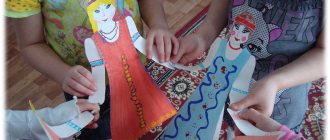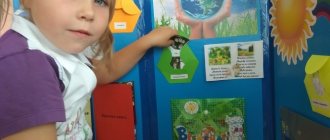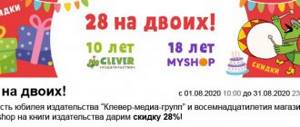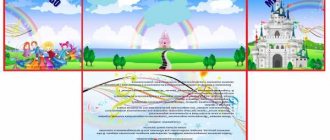“Fairy tale - as a means in the spiritual and moral education of preschool children”
Creative report
"A fairy tale is a means of
spiritual and moral education of preschool children"
Preschool teacher
Petrova Elena Ivanovna
Conditions for the occurrence of experience
“Reading fairy tales is the path along which a smart, thinking teacher finds the way to a child’s heart.” /V.A.Sukhomlinsky./
Childhood is the most beautiful and carefree time. Many discoveries are prepared for every step of the child, every day he lives. Childhood can be called a “poetic” age. However, a child, like a poet with his subtle organization, is unfamiliar with the difficulties and problems of life. He sees the world in colors and bright colors. The life of a little person consists of fantasies, games and bright images with which he decorates the world around him. I would like to turn to the statements of great innovative teachers. So Vasily Aleksandrovich Sukhomlinsky argued that childhood is an everyday discovery of the world and therefore it must be done so that it becomes, first of all, a knowledge of man and the Fatherland, their beauty and greatness.
From the very first days of the child, parents introduce the basic elements of folklore, such as nursery rhymes, jokes, and lullabies. Through the above elements of folklore, the child becomes acquainted with behavioral skills. The first full-fledged works of art that a child gets acquainted with are, after all, fairy tales. Fairy tales play a leading role in the spiritual and moral education of a child. We can safely say that a fairy tale is inseparable from beauty. It favors the development of aesthetic qualities, without which nobility of soul, heartfelt compassion for human misfortune, as well as grief, is unthinkable. A child discovers the world not only with his mind, but also with his heart. And this happens thanks to the same folk tale. The fairy tale is a fertile and also valuable source in nurturing love for the Motherland. Once, during a security moment, I read the fairy tale “Zayushkina’s Hut” to the children. After a conversation based on the fairy tale, we found out which of the heroes was brave and managed to resist the fox and protect the bunny. One of my students said that he wants to be like a rooster and protect the weak.
The fairy tale instructs children in creative thinking, love and respect for the future of all humanity. It is difficult to imagine a child’s childhood without fairy tales and children’s books. Fairy tales enter a child’s life from childhood and accompany his entire life. Definitely, fairy tales cannot be called entertainment, nor a cure for boredom. After all, fairy tales are a way for a child to improve. A child may repeatedly ask his parents or teachers to read his favorite book in order to hear again and again the story about his favorite fairy tale characters. Often a child imitates the main characters, trying to be like them. After all, every child really wants to be fearless, strong and sowing good. In a fairy tale, everything is possible. You just have to want it. Without a fairy tale, a child has no dream of that same magical land where all wishes come true. A fairy tale gives a child a chance to fantasize.
Who am I? Who do I want to see myself as? What would I do if I had magic? And that’s why children love fairy tales, and in their fantasies they imagine themselves in the roles of good wizards, giants, fairies, sorceresses, etc.
The leading task of an adult, I believe, is to direct the child’s fantasy in the right positive direction, since it is not at all difficult for him to go negative.
Most Russian folk tales convey to the child the conviction of success in the triumph of good over evil. It is through a fairy tale that children become familiar with such primary concepts as “what is good and what is bad,” as well as initial ideas about friendship and betrayal, courage and cowardice, which means that the foundations of moral and spiritual values are laid. Fairy tales carry the very first information about relationships between people. Thanks to fairy tales, a child develops the gift of worry and compassion, as well as being happy for another person.
There is no doubt that spiritual and moral education is impossible without thinking with a preschooler about the moral side of the actions of fairy-tale characters in works of art, with projection onto the actions of people.
Therefore, I am firmly convinced that work on the spiritual and moral development of young children must begin with an interest in fairy tales.
But, unfortunately, in the modern situation of current Russian society there is such a phenomenon as a decline in morals and changes in people’s value orientations, not for the better. Economic and political changes taking place in our country, however, do not always have an affirmative and beneficial effect on the development and formation of the younger generation, who are in search of their “I” and the meaning of their lives. This phenomenon is reflected in the second-rate status of modern children's literary works, the overwhelming popularization of foreign-produced cartoons that are far from moral, which introduces a certain distortion and distortion into the formation of the spiritual and moral qualities of a child's personality, such as kindness, compassion, compassion, empathy, righteousness, and honesty.
It was folk tales that preserved that common human morality, which, alas, many have lost today, I hope not irretrievably.
As a mother of two sons and a teacher, in life and in my professional work I increasingly see precedents of children’s cruelty, aggression towards each other, in relation to close people. Having worked for several years in a mixed-age group, I often notice that not all children know how to communicate with each other, for a number of reasons, for example, children at home, children who have not attended kindergarten for a long time, older children in relation to younger ones, a tendency to hostility and ill will. The reluctance to share toys also causes far from positive emotions in children. Reluctantly, preschool children go to the rescue of a friend who finds himself in a difficult situation. Children have poorly developed skills of benevolence and pity, as well as empathy. But it is from early preschool age that we carry out our work aimed at the formation and development of a person’s spiritual and moral qualities.
To summarize, we can say that there is a process of embitterment and aggressiveness of the younger generation.
Relevance
That is why I believe that already from early preschool age it is necessary to demonstrate to the child the moral essence of every act committed. And what else can a fairy tale and contact with a fairy tale help in solving this problem?
This problem prompted me to study the topic
–
“Fairy tale – as a means in
the spiritual and moral education of preschool children.”
Relevance of this topic
I see the following, namely: in a modern, morally unstable society, a fairy tale, like many traditional cultural values, has significantly lost its meaning. But it is with the help of fairy tales that it is much easier and more accessible (in terms of age) for preschool children to acquire moral skills and develop as individuals.
To solve this problem, I chose to introduce Russian folk tales to children, because I am convinced that fairy tales are in tune with the thinking of a little person and are an excellent means of spiritual and moral education of the younger generation.
Based on the problem, I set myself a goal:
Target
- study of folk tales as a means of spiritual and moral education of preschoolers. To cultivate a sense of duty, justice, responsibility, mercy and other spiritual and moral qualities.
To achieve this goal, I have outlined the following tasks:
Tasks.
1. Study methodological literature on this topic;
2. Identify age-related characteristics of the spiritual and moral education of preschool children;
3.Create the necessary conditions for introducing Russian folk tales to children of different age groups.
4.Develop the ability to compare and analyze the actions of fairy-tale heroes, learn to evaluate the behavior of heroes.
5.Select diagnostic materials aimed at monitoring the level of education of children’s moral qualities.
6.Help parents understand the value of a fairy tale, its primary role in the education of today’s and, especially, tomorrow’s people.
Methods and techniques aimed at developing the spiritual and moral qualities of preschool children.
My research methods are:
study and analysis of literary sources on the research problem;
development of methods, means and forms of mutual communication between teachers and students during the formation of value guidelines in children’s behavior;
development of GCD using fairy tales, using the principles: cognitive-motivational, emotional-evaluative and activity.
monitoring children during classes and free activities;
conducting analysis and identifying results;
testing of pupils;
questionnaire and conversation with parents.
Subject of study
– a fairy tale as a means of educating the spiritual and moral qualities of preschool children.
Practical significance
The research consists of developing spiritual and moral qualities in preschoolers, as well as accumulating methodological material on this problem for my further work, searching for innovative, effective forms and methods of activity in spiritual and moral education, as well as for transmitting the experience gained to colleagues.
In a group of different ages, I purposefully work to familiarize children with fairy tales using the most effective methods for developing spiritual and moral qualities
:
1. Introducing children to the content of the fairy tale;
2. Involving children in active activities (visual activities based on fairy tales, exhibitions of drawings, crafts) 3. Staging a fairy tale;
Methods for familiarizing yourself with a fairy tale
Studying methodological literature, I can identify methods for introducing a fairy tale. I think one of the most common methods of introducing a fairy tale is reading the fairy tale by the teacher.
I tell many Russian folk tales, which I and my children were raised on, to my students by heart from memory. With this “reading”, verbal contact with children is best achieved.
I read larger fairy tales from books. It is also necessary while reading to mention the careful and careful handling of the book.
Reading a fairy tale is appropriate not only during classes, but also during routine moments. I read fairy tales before eating in the dining room, and also before quiet time. My one and a half and two year old children love fairy tales. As, indeed, are the older students.
Next method
–
storytelling
, i.e. more fluent text transmission.
In the process of storytelling, it is allowed to shorten the text, rearrange words, include explanations, and so on. However, the main thing in the narrator’s presentation is a bright, colorful retelling with the transfer of the characteristic features of fairy-tale characters.
In my work, I use effective and efficient techniques to help children understand and perceive fairy tales. This is an expressive read
fairy tales using intonation and facial expressions. Using this technique, students can easily imagine a “living” image of a fairy-tale character.
I would like to mention one more technique - this is a conversation based on a fairy tale.
. This is a beneficial technique, during which I pay great attention to the moral qualities of fairy-tale characters, and also analyze, together with the children, the motivation of their actions.
In my work with children, I pursue a specific goal, namely the education of spiritual and moral qualities. These personality traits include kindness, compassion, desire to help, caring for younger and weaker people, polite attitude towards parents, respect for loved ones, etc.
I form all these qualities during conversations based on fairy tales, asking questions such as:
Do you like the hero of the fairy tale?
What did the hero of the fairy tale do?
What action did he commit?
How did the hero behave towards other heroes?
How do you act towards your parents? (an analogy of actions is drawn),
Do you obey your parents? and so on.
In the course of applying the activity principle, I actively used dramatization based on a fairy tale.
In it, the child plays the role of a fairy-tale character. Dramatization contributes to the development of such character traits of a child as artistry, self-confidence and even courage. In such cases, the preschool child plays the role of a fairy-tale character, although I also practice the role of a storyteller. For children, the role of narrator-presenter evokes a sense of pride and responsibility.
I have repeatedly used this type of perception of a fairy tale in open classes (Appendix No. 1, 2)
I include drawing, appliqué, modeling, and listening to music as productive methods of the activity principle. The use of various forms of working with a fairy tale creates a keen interest in the fairy tale, which has a beneficial effect on the formation of the personal qualities of a preschooler. (Appendix 3)
An equally effective method of working with fairy tales is creative tasks.
, which can be both individual and collective.
The result of such tasks is the production of a product, such as a craft, a drawing. So, when drawing together on the topic “My favorite fairy tale,” the children showed their drawings, named and retold the fairy tale. To consolidate knowledge, didactic games based on the material of familiar stories are useful.
As an example, such didactic games can serve as the games
“Do you know the fairy tale?”
,
“Recognize the hero of a fairy tale by description”, “Collect a picture”, puzzles, mosaics
and others.
It should be noted that such games are accompanied by a conversation discussing the heroes of fairy tales and their behavior. The entire conversation is relaxed, which makes the child open to communication with adults.
Diagnostics and analysis as ways to identify problems and eliminate them.
Study and analysis of literary sources on the research problem
I began my work by selecting and studying methodological literature on the spiritual and moral education of preschool children, on the role of folk tales in the system of educating preschoolers. From the experience of leading teachers, I learned a lot of information that I can apply in practice. The so-called stimulus for studying this topic was the observation of children’s behavior in various situations (in the classroom or in their free time) and I became increasingly convinced of the need and relevance of the spiritual and moral education of preschoolers.
Work with children
To begin with, I selected diagnostic material: Diagnostics of moral development I.B. Dermanov's “Finish the story” technique. (Appendix 4) The purpose of the diagnostics: to study the understanding of moral norms by children of senior preschool age (generosity - greed, hard work - laziness, truthfulness - deceit, attention to people - indifference), to determine the ability of children to relate these norms to real life situations, to resolve problematic situations using basis of moral norms, and give a basic moral assessment.
During the diagnosis, each of the children in the middle and senior groups had to complete situational stories. All these stories were everyday situations, which required children to have certain observational skills, as well as basic knowledge of the rules of behavior. The entire diagnostic process took place in a relaxed atmosphere, as well as through observation of children.
Diagnostics were carried out with the older and middle subgroup - 10 children. To find out the extent of the problem I was studying, I carried out introductory diagnostics at the initial stage of work.
0 points -5 people (50%)
1 point – 3 people (30%)
2 points – 2 people (20%)
3 points – 0 (0%)
These indicators give an idea that half of the diagnosed children had a minimally low level of spiritual and moral development. The children were in difficulty in their answers, namely, the children’s answers were monosyllabic “yes” or “no.” The second half (1 and 2 points) continued the stories, not being able to evaluate their actions and, accordingly, not being able to explain their choice in the evaluation.
I discovered that of all the moral qualities, children have the concepts of kindness and friendship.
Repeated diagnostics revealed a slight increase in the level of spiritual and moral.
0 points - 0 (0%)
1 point – 5 people (50%)
2 points – 3 people (30%)
3 points – 2 people (20%)
Preschoolers more confidently continued the situational story from the point of view of spiritual and moral norms, correctly assessing the behavior of children in situations.
Working with parents
The next stage of my work on the topic was joint work with parents, since after all, the leading role in the formation of a spiritually developed and moral personality is given to parents.
It is parents who are role models for their children, as well as bearers of spiritual values. Based on the fact that we all live in a small village, I am well aware of the entire parent contingent and their potential. And, taking into account family and housing problems, as well as the lack of time problems of some parents, I decided to start working by holding a series of parent-teacher meetings and consultations.
Using Internet resources, I conducted a consultation “Child in the family and kindergarten.” The purpose of the consultation was to reveal the content of the spiritual and moral education of children, both in kindergarten and in the family, “The role of fairy tales in spiritual and moral education” (Appendix 5) in order to enhance the pedagogical skills of parents in the development of the child in the family. During the conversations, many parents took a different look at the role of fairy tales in the life and development of a child.
Conducted a survey among parents on the topic “The place of books in your family”, “The role of Russian folk tales in raising a child.” (Appendix 6-7)
Based on the results of the survey, as well as from conversations with parents, I concluded that they understand the place of fairy tales in a child’s life, try to read fairy tales more often, and are well aware of the fact that Russian folk tales contribute to the moral development of the child, although the overwhelming percentage of children prefer fairy tales to cartoons . Some parents expressed the opinion that housework and work literally eat up all their free time, which does not allow fairy tales to be fully used in the child’s life. That is, the problem exists, and it is necessary to work on its solution.
Parental comprehensive education on this topic was also reflected in the production of the booklet “Correct Fairy Tales for Children” with a variety of information for parents in the form of advice, as well as a recommended list of fairy tales, taking into account the age characteristics of children. The contents of the booklet were also compiled using Internet resources. (adj. 
I periodically update information in the corner for parents “For you, parents!”
in which parents can get acquainted with tips and suggestions on how to organize joint reading at home under the following headings: “Raising a reader”, “What to read?”, “When to read?”, “Reading again and again...”, as well as consultation for parents “The role of fairy tales in the development and upbringing of a child” with a selection of games with the child at home.
An important role in the education of a spiritual and moral personality is the joint activity of children and parents. At the beginning of my teaching career, parental activity was small and many were reluctant to respond to such requests. But then the parents, hearing reviews about the benefits of working together from other parents, began to change their minds and gradually began to get involved in the work. Which makes me very happy. The group organized such exhibitions as “My native village”, “Different mothers are needed, they are important by profession”, etc.
So, working on this topic, I organized a thematic exhibition “We are drawing a fairy tale.”
In a dialogical conversation, parents can discuss their plans with their children, analyze the behavioral character of the main character, his actions and evaluate them. Children love to draw heroes of their favorite fairy tales, and drawing with their parents is doubly fun.
From a spiritual point of view, leisure activities for preschoolers, which are held together with parents on literary topics: “Visiting a fairy tale,” “The fairy tale is a lie, but there is a hint in it...”, are of great benefit from a spiritual point of view, which contributes to the unity of parent and child.
So, spending joint leisure time with their parents on Russian folk tales, my students once again remembered the heroes of fairy tales that they knew so well. While completing tasks, children assessed the actions of fairy-tale characters, tried to determine who owned the object, etc. The product of this leisure activity was an exhibition of crafts made during the event.
Continuing to talk about joint activities, I will give an example of holding holidays in our group. By March 8, a festive program “For my beloved mother” was held; children, parents and junior teachers showed the fairy tale “Kolobok” to the guests.
I am clearly convinced that the process of developing spiritual and moral qualities in preschool children with the help of Russian folk tales will be effective if an appropriate and suitable developmental environment is created in the group. In particular, a book corner with a selection of the very necessary literature, namely fairy tales.
Together with our parents, we replenished the group’s library with colorful books with Russian folk tales. At the parent meeting, I noted the parents who took part in replenishing the library. Many parents brought books from their childhood.
Thus, I work together with parents to develop spiritual and moral qualities in preschoolers through fairy tales, which has a beneficial effect on both children and their parents.
conclusions
In our difficult, socially unstable times, not only well-being and prosperity, but also the stability and adequacy of society as a whole depend on correctly set priorities in the spiritual and moral education of the younger generation. My role as a teacher is to help a little person enter a difficult world where he will encounter goodness and loyalty, courage. But in the world, unfortunately, there is betrayal and deception, cunning and deceit. Of all the diversity, a child must be able to distinguish good from bad, because it is in childhood that the very first views and assessments from a moral point of view are formed.
An in-depth study of methodological literature on the spiritual and moral education of preschool children allowed me to begin my work on the formation of spiritual and moral qualities in preschool children, using the means of folk pedagogy: folklore, fairy tales, proverbs and sayings. I gave priority to Russian folk tales, as they are a powerful tool in the spiritual and moral development of the individual. It is in preschool age that the most comfortable conditions appear for the influence of fairy tales on the spiritual and moral development of the individual.
I carried out work to determine the level of formation of spiritual and moral qualities through Russian folk tales.
My teaching activities in this direction were carried out systematically. In the process of my activity, previously set tasks were solved. Children's knowledge about the so-called “positive and negative” qualities of people was constantly expanded and coordinated. This happened during a conversation about a fairy tale, a discussion of the actions of the heroes of fairy tales, projection on oneself and in one’s daily life, an attempt to evaluate one’s own actions and those of others.
As a result, my students know plots from many fairy tales. Children learned to highlight the plot of a fairy tale, as well as express their thoughts and feelings regarding the actions committed by fairy-tale characters. And what is very important, my students become kinder and more attentive to others, more responsive.
Based on the above results, I can conclude that my creative approach and teaching skills allow me to achieve my goals and objectives in working on this topic, and in the future will help me achieve higher performance in the future.
I share the results of my work with colleagues at teachers’ councils and methodological associations.
Bibliography
In my work I use the following literature:
magazines "Preschool education":
I. Zimina “Folk fairy tale in the system of education of preschool children” No. 1 - No. 5 2005;
N. Isaeva “Fairy tale as a means of optimizing the psycho-emotional sphere of older preschool children” No. 7 2012;
O. Potapovskaya “Spiritual and moral education of children and parents” No. 1 2006;
G. Figdor “Fairy tale and mental processing of mental conflicts” No. 1 2007;
O. A. Playing a fairy tale: fairy tale therapy and classes for the development of coherent speech in preschoolers. M., 2006;
Development of creative thinking. We work according to a fairy tale. Mosaic synthesis 2012
M. D. Makhaneva. Theatrical activities in kindergarten. - M.: Sphere shopping center, 2003.
Internet resources.
12
At what age can you read fairy tales?
Communication between mother and child from infancy is carried out through voice and touch. The baby is calmed when the mother begins to speak calmly and measuredly. Therefore, from the age of 3 months you can try reading to your child. However, naturally he will not understand the meaning.
For the first communication, you need simple fairy tales with bright illustrations. There are soft books that will interest your baby. At this stage, the connection between mother and baby is important. He must learn to listen to the intonation of the voice and understand what emotions his mother wanted to convey.
On a note! Educational fairy tales for children will help them master the world around them. In them you can learn about animals, plants, flowers and much more. You can read them, listen online or buy an audio story. Grandmother's tales will help to attract the baby when the mother cannot cope.
How to teach your child mental math on your own
From 6 months, the baby is actively teething, so reading can become a problem. After all, the child will want to bite or lick the book. At this age there is a connection between the image and the voice. He will be able to comprehend where the object is. Two, or better yet one, pictures would be appropriate on one page. This way the baby will be less distracted and will receive more information.
At an early age it is better to read simple books, so the baby will better absorb information
From 8 months, the child needs to pronounce the actions of the characters. Tell them how they talk and what they do. This will help you master speech faster. From 10 months, the child can point to familiar objects and distinguish them from each other.
A child can be taught to fall asleep after a bedtime story. It will help you relax after a hard day and get ready for sleep. When the child likes it, it will become a kind of tradition for falling asleep.
On a note! The first books must be chosen very carefully. They should not contain unnecessary information and pictures. The child must understand what we are talking about.







